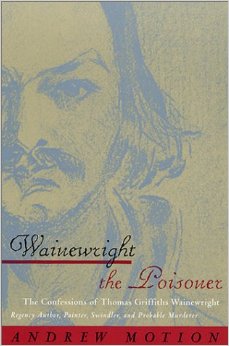Thomas Griffiths Wainewright (1794-1847), the little-known subject of Andrew Motion’s intriguing book, was a significant figure in the London of his times: artist and writer, he painted Byron and was a friend of Fuseli and Blake. The form of the narrative is as beguiling as the subject matter. Eschewing straight biography, Motion writes the ‘Confession’ from the fictionalised first-person viewpoint of Wainewright.
At the end of each chapter, he adds ‘Notes’ — scholarly, biographical information about the real Wainewright. This ‘creates a fascinating alternative perspective to the vivacious but chilling story of the gentleman-dandy artist. After the suspicious death of three relatives, he was charged — though only with the forgery of life insurance documents and transported to Tasmania. Wilde wrote about him, spookily foreshadowing his own downfall.
This mixed-genre study produces a complex reconstruction of its subject, and reinstates Wainewright in his Romantic context.

